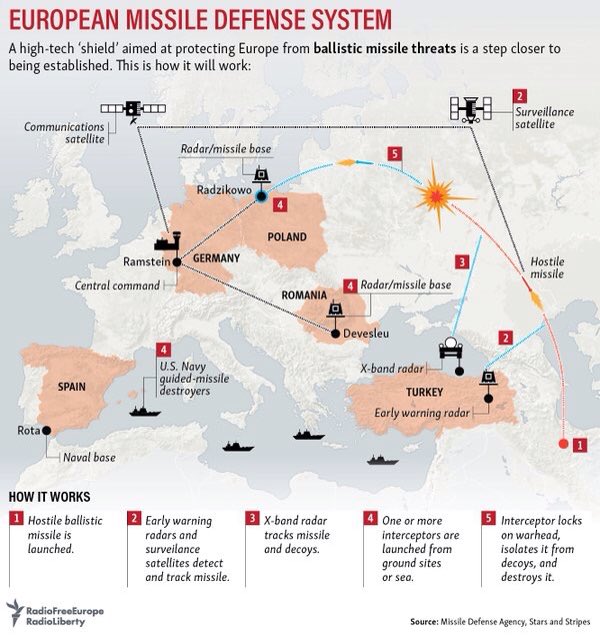Since Congress specifically provided the president with the authority to acquire the U.S. Naval Station at Guantanamo Bay, Chairman Royce’s legislation asserts Congress should have to approve any decision to give it away, which certainly shouldn’t happen with this communist and hostile Cuban government.
As Chairman Royce has said, “the U.S. Naval Station at Guantanamo Bay is critical to our national security and humanitarian operations that have saved countless lives. We must protect against executive overreach during this administration, and the next, and the next.”
DefenseNews/WASHINGTON — Responding to fears the US military’s technological superiority is at risk, the Senate Armed Services Committee advanced an annual defense policy bill that would open competition to commercial industry, seen as a spur to innovation and cost-efficiency.
The marquee change, if the SASC’s version of the 2017 National Defense Authorization Act passes Congress and is signed by the president, is the proposed closure of the Pentagon’s chief weapons buyer’s office and reassignment of its duties to two new defense undersecretaries for innovation and acquisitions management. It also contains far-reaching language to curb a major concern of SASC Chairman John McCain: cost-plus contracts.
In February, McCain made headlines when he vowed not to authorize the Air Force’s Long Range Strike-Bomber so long as it was procured using a cost-plus contract. The SASC bill does not check that box, but it promises a broader impact, to discourage cost-plus contracts, where a contractor is paid for all of its allowed expenses to a set limit, plus additional payment to allow for a profit.
In a background briefing on Monday, a senior committee aide — who likened DoD’s dependence on cost-plus to a drug addiction — said the venerable contracting vehicle has its uses, but too often fuels cost overruns and is out of step with the way commercial firms in Silicon Valley and elsewhere do business. Fixed-price contracts, on the other hand, give firms an incentive to work as efficiently as possible to maximize their profits.
“All of this reform is because the Cold War has ended, and post-Cold War, American technological military dominance is over, and not only can our adversaries see that they can replicate what we can do with the traditional defense marketplace, they are seeing there is a lot of technology in the commercial marketplace,” said the aide. “If they can access that quicker than we can access that and derive defense products from that new base, they can potentially leap ahead of us.”
The bill, which the SASC voted to advance to the full Senate last week, contained 130 acquisition reform provisions — a continuation of the committee’s work last year. Some language aimed at curbing bid protests would mean any large firms that lose a protest they file would have to pay a penalty, while other provisions would curb barriers to entry for so-called non-traditional firms.
Complex, DoD-unique cost-accounting standards geared toward the minutiae of cost-plus contracts have not only created a barrier for commercial firms but an auditing backlog within DoD that is preventing 30- and 40-year-old contracts from being closed, the Senate aide said.
To address this, the bill would set up a new accounting standards board aimed at pro-competition changes.
“We’re looking to move more and more companies away from that [accounting standard], and make sure the way accounting looks in the department is more and more commercial-like, so companies aren’t creating new accounting systems just to deal with the Department of Defense,” the aide said.
For a company like SpaceX, which is developing its own rocket engine, assessing a reasonable price is a tricky proposition, the Senate aide said. For DoD, which uses cost-plus contracting, it’s the agreed-upon cost of production plus a reasonable profit, while for a commercial firm, it’s about what the market will bear.
“In the fixed-price world, your profit margin is about how well you execute,” the aide said. “A government contractor is more like a utility, and the argument is who’s more innovative, someone with a high margin or a public utility?”
A four-year pilot program established by the bill would exact fees to fund advanced prototypes purchased through fixed-price contracts. The penalties would amount to, for a cost-plus technology development contract, an additional 1 percent of DoD’s year-to-year obligation, and on a procurement contract, 2 percent. This requirement would begin in 2018.
Among other measures, the bill would establish a phased-in, internal approval process for cost-plus contracts, which by 2020 would apply to any cost-plus contract over $5 million.
Ultimately, the Defense Department will not be kept from using cost-plus contracts where needed, particularly for defense-unique platforms like, say, a nuclear submarine. However, the aide stopped short of saying the proposed bill, if enacted, would have precluded the current acquisition strategy for the bomber. Instead, the bill reinforces the signal that arrangements of this type will face new scrutiny.
“We would hope the department would look at that in a different manner,” the aide said. “Ultimately it will be discretionary. We don’t want to impinge on the [defense] secretary.”
Bid Protests
Acknowledging the value of the bid protest process as a policing function for defense acquisitions, the aide said it also creates a risk-averse culture among acquisitions officials that is stymying innovation. Hence the proposed “loser pays” provision.
That language would apply to a protest-losing company with more than $100 million in annual revenue, or an incumbent firm that protests the loss of a contract, keeps the business via a bridge contract and then loses. The penalty would equal the Government Accountability Office’s cost to process the protest.
What’s driving the language, the Senate aide said, is that Wall Street analysts have begun to tout protests as being part of the fiduciary responsibility of a losing firm. Members of the committee fear that this thinking, unchecked, will fuel a boom in protests.
Another concern was that the risk aversion among contracting officers was leading to contract awards for lowest-price, technically acceptable, offerings over offerings that were neither the most innovative or the best value for the government.
Table 1. FY2017 National Defense Authorization Act (H.R. 4909)
amounts in millions of dollars of discretionary budget authority
Bill Title Budget Request HASC reported bill (H.R. 4909) Senate committee- reported bill Conference Report National Defense Base Budget Procurement 101,971.6 103,062.3 Research and Development 71,391.8 71,629.8 Operation and Maintenance 171,318.5 169,325.3 Military Personnel 135,269.2 134,849.8 Defense Health Program and Other Authorizations 36,557.0 37,025.6 Military Construction/Family Housing 7,444.1 7,694.0 Subtotal: DOD Base Budget 523,952.1 523,586.9 Atomic Energy Defense Activities 19,240.5 19,512.1 Other Defense-Related Agencies 211.0 300.0 TOTAL: National Defense Budget Function (050) Base Budget 543,403.6 543,399.0 DOD OCO Budget 58,798.0 58,793.5 GRAND TOTAL: FY2017 NDAA 602,201.6 602,192.5





